Fellows programma SAPIExcellence
SAPIExcellence è la strategia di Ateneo per attrarre i migliori e più promettenti fellows, incentivandoli a partecipare attivamente al Pillar “Excellence” del Programma Quadro Horizon Europe, e – in particolare – alle Azioni Marie Skłodowska-Curie (MSCA) e agli schemi di finanziamento dello European research Council (ERC).
Di seguito vengono brevemente presentate alcuni Fellows e i loro progetti:
BE-FOR-ERC
 Lavinia CERIONI - BE-FOR-ERC 2024
Lavinia CERIONI - BE-FOR-ERC 2024
Words of Wisdom: Gendered Metaphors and Power Dynamics in Early and Late Antique Christian Literature (WoW)
WoW esamina come gli autori cristiani dei primi secoli abbiano fatto ricorso al linguaggio e alle metafore di genere presenti nei libri sapienziali della Settanta – in particolare la personificazione della Sapienza come figura femminile – per elaborare e definire norme di genere riguardanti le donne. Attraverso l’interpretazione di queste metafore bibliche femminili, essi esercitarono un’influenza decisiva nella formazione delle aspettative sociali e dei modelli di comportamento femminile. Il progetto propone una nuova lettura delle dinamiche di genere nell’antichità, mostrando come il linguaggio connotato dal genere abbia contribuito a strutturare i rapporti di potere nelle comunità cristiane in via di sviluppo.
Basandosi su un ampio corpus letterario in latino, greco, copto e siriaco, proveniente da diverse aree del Mediterraneo (I–VI secolo d.C.), la ricerca offre un’analisi di respiro ampio e approfondito. Il progetto si apre con lo studio di casi esemplari che illustrano la ricezione delle metafore di genere dei libri sapienziali nella letteratura cristiana. WoW si avvale delle teorie socio-linguistiche e cognitive, in particolare di quelle che indagano come il linguaggio metaforico contribuisca a plasmare le norme sociali, e propone una radicale revisione del quadro interpretativo relativo alle donne nel cristianesimo antico, combinando gli studi di ricezione con i principi della teoria della metafora concettuale.
Gli obiettivi principali del progetto sono due:
O1: Analizzare la ricezione delle metafore bibliche di genere nei testi cristiani, isolando e contestualizzando i passi dei libri sapienziali, soprattutto nei casi in cui le personificazioni femminili della Sapienza furono utilizzate per costruire modelli di comportamento femminile. L’obiettivo è ricostruire diacronicamente questa ricezione e chiarire i processi concettuali che hanno contribuito a determinare le norme religiose e sociali delle donne nella letteratura cristiana.
O2: Elaborare un quadro teorico capace di rendere conto del ruolo del linguaggio di genere nel discorso cristiano antico e tardoantico sulle donne. Questo obiettivo mira a mettere in evidenza le dinamiche di potere insite nel linguaggio metaforico e a mostrare come gli autori cristiani lo abbiano impiegato per definire norme di genere nei secoli formativi del cristianesimo.
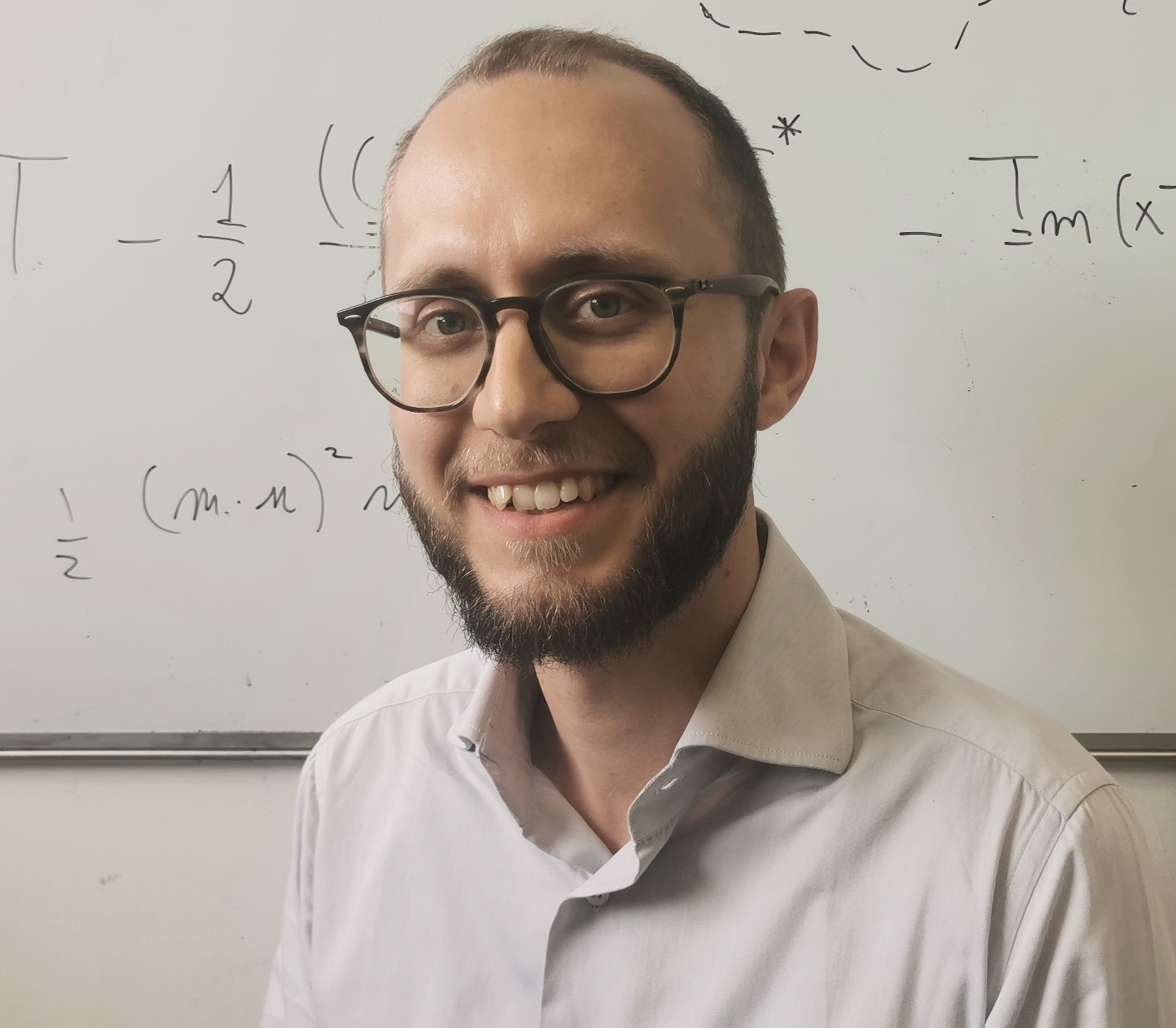 Giulio LUCCI - BE-FOR-ERC 2024
Giulio LUCCI - BE-FOR-ERC 2024
GAME-BioS Geometry and Active Mechanics interplay in Engineered Bio-inspired smart Structures
I sistemi viventi, come cellule e tessuti, possono reagire a stimoli provenienti dall’ambiente circostante tramite lo sviluppo di forze attive. Tuttavia, non è ancora del tutto chiarito come queste forze interagiscano con la geometria dell’ambiente per determinare la forma finale di una struttura biologica. Osservazioni sperimentali hanno mostrato che la crescita di tessuti su substrati curvi è fortemente influenzata dalla curvatura e dalla contrazione attiva delle cellule, e che forze attive possono indurre cambiamenti di forma spontanei anche in gel soffici bio-ispirati. Sulla base di queste osservazioni, il progetto GAME–BioS si propone di sviluppare un quadro matematico e computazionale per descrivere come la geometria e la meccanica attiva guidino il controllo della forma in materiali soffici. L’obiettivo finale del progetto è quello di fornire uno strumento rigoroso ed efficace per ingegnerizzare strutture intelligenti di ispirazione biologica, come tessuti artificiali o gel attivi, combinando modellizzazione teorica e Machine Learning. A tal fine, si ricorrerà a metodi della Meccanica del Continuo e della Geometria Differenziale, costruendo un modello matematico in grado di riprodurre le variazioni di forma nei materiali soffici dovute a fenomeni di instabilità indotte dalla contrattilità o dalla curvatura. Successivamente, il progetto si concentrerà sulla risoluzione del problema inverso tramite tecniche di Machine Learning, ossia sull’identificazione dei parametri fisici necessari per raggiungere una forma target in un materiale bio-ispirato. Addestrando una rete neurale con i risultati delle simulazioni e con le equazioni del modello teorico, si fornirà la forma target in ingresso per ottenere in uscita i valori dei parametri necessari per realizzarla. Lo sviluppo del framework proposto potrebbe offrire un quadro unitario per la descrizione di strutture ingegnerizzate intelligenti, che richiedono un approccio innovativo e interdisciplinare.
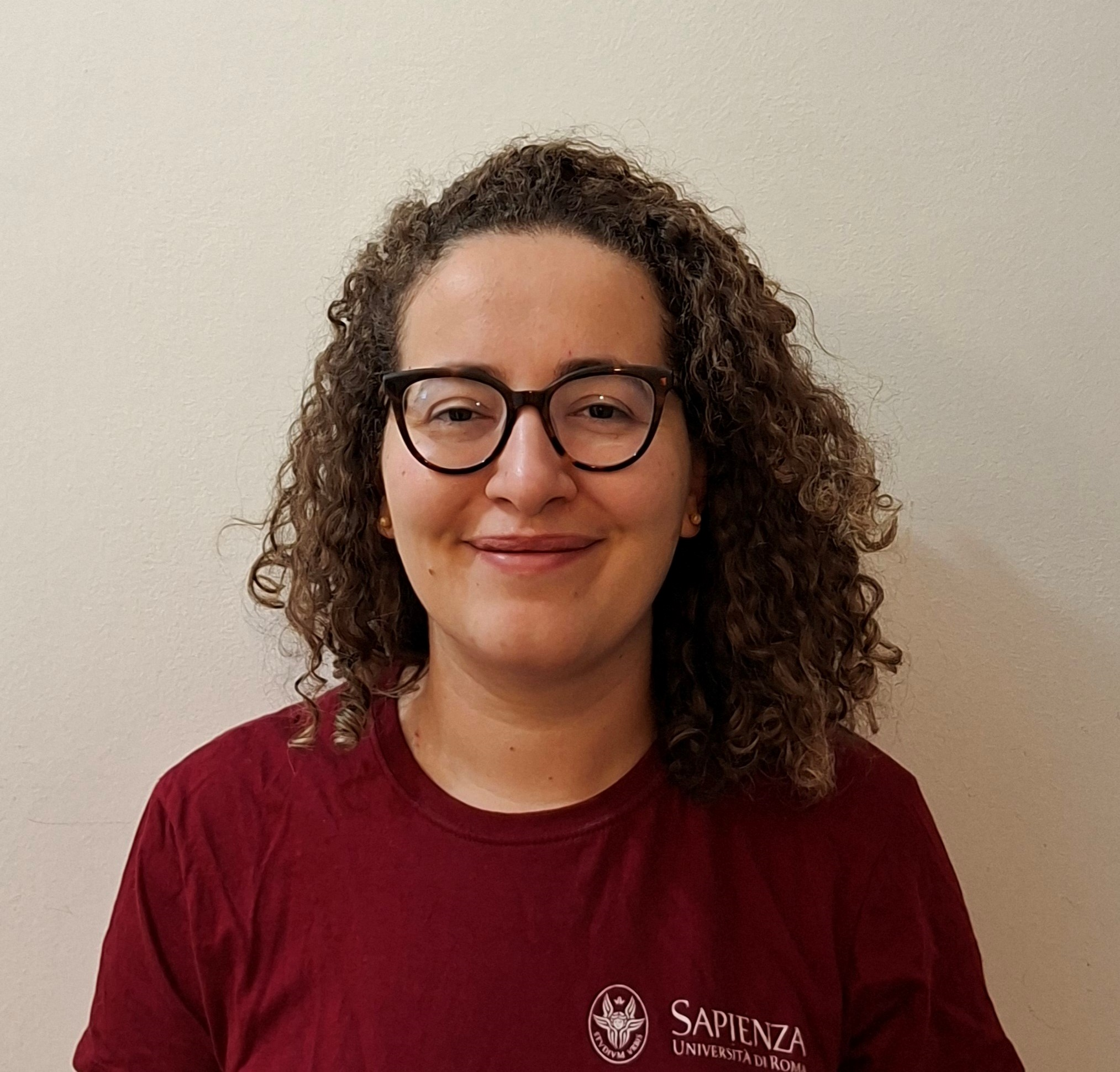 Marta MARUCCI - BE-FOR-ERC 2024
Marta MARUCCI - BE-FOR-ERC 2024
DISCRETE
DIScovering CRETE’s epigraphic poetic landscape
DISCRETE – DIScovering CRETE’s epigraphic poetic landscape è un progetto di ricerca incentrato sull’indagine della produzione poetica cretese nei cosiddetti “Silent Centuries”. L’isola, cuore della civiltà minoica e poi micenea, è profondamente legata ai miti fondativi della Grecia, come la nascita di Zeus sul monte Ida o la figura di Minosse, re di Cnosso e legislatore. Considerata una delle culle della civiltà europea per i suoi primati artistici, religiosi e politici, Creta conobbe tuttavia, tra VI e V secolo a.C., un improvviso declino della propria centralità culturale e un progressivo isolamento rispetto al resto della Grecia. In questo periodo però la scrittura non scomparve: gli scavi archeologici hanno restituito un ricco patrimonio epigrafico, che comprende anche le più antiche leggi greche, come il Codice di Gortina e le Leggi di Dreros. Ciò che sembra mancare, invece, è una tradizione poetica continuativa. Per l’età arcaica e classica le testimonianze letterarie si limitano a pochi poeti (Taleta, Epimenide, Ibria), e non si conoscono iscrizioni metriche anteriori alla fine del IV secolo a.C. DISCRETE si propone di colmare questa lacuna. Attraverso un approccio multidisciplinare che combina filologia, linguistica ed epigrafia, il progetto è dedicato allo studio delle iscrizioni metriche cretesi di età ellenistica, momento in cui la poesia epigrafica conobbe una nuova fioritura, con l’obiettivo di ricostruire una “letteratura sommersa”, sopravvissuta unicamente attraverso le iscrizioni.
 Francesco CARUSO - BE-FOR-ERC 2024
Francesco CARUSO - BE-FOR-ERC 2024
PlatoNIC
The Rediscovery of Platonism in Niccolò Leonico Tomeo’s “Dialogues”
The Rediscovery of Platonism in Niccolò Leonico Tomeo’s “Dialogues” (PlatoNIC) aims to be the first in-depth investigation into the pivotal role played by the Paduan humanist Niccolò Leonico Tomeo (1456–1531) in the transmission of Platonic philosophy in 16th-century Italy. Although Tomeo is primarily recognized for his position as a professor of Aristotelian philosophy at the Studium of Padua and for his commentaries on Aristotle’s works, PlatoNIC seeks to demonstrate that his Dialogues (15241, 15302) made a significant, yet largely overlooked, contribution to the post-Ficinian revival of Platonic texts in Europe. Drawing upon his direct access to Greek manuscripts, Tomeo translated and integrated substantial sections of Neoplatonic commentaries—texts largely unknown to his contemporaries—into his Dialogues without explicitly citing these sources.
PlatoNIC combines a range of methodologies to: 1) uncover the hidden presence of Greek Neoplatonic sources in Tomeo’s Dialogues; 2) explore Tomeo’s ‘library’ by examining manuscripts with marginalia attributed to his hand; and 3) analyse the argumentative strategies and theoretical motivations behind Tomeo’s ‘hidden’ use of these sources. As no comprehensive study of Tomeo’s Dialogues currently exists, PlatoNIC aims to fill a significant gap in the scholarship on Italian Renaissance philosophy and to highlight Tomeo’s Platonism, as well as his contributions to the philosophical debates of the early 16th century. Moreover, PlatoNIC could serve as the first step toward a broader investigation into the revival of Greek Platonism in post-Ficinian Italy, potentially becoming the central theme of an ERC Starting Project titled RE-Plato: The Rebirth of Greek Platonism in the Italian Renaissance.
 Marta ADDESSI - BE-FOR-ERC 2024
Marta ADDESSI - BE-FOR-ERC 2024
EWA
Egyptian Wisdom through the Ages: Teachings, Instructions and Sayings from Dynastic Egypt to Christian Egypt
Insegnamenti e istruzioni rappresentano una parte significativa della letteratura dell’Egitto antico, tanto da costituire un genere letterario a sé stante. Le opere appartenenti a questa specifica categoria testuale, comunemente designata con il termine tecnico sbayt (‘insegnamento’), sono attestate già a
partire dall’Antico Regno, sebbene siano spesso conservate in copie di epoca molto posteriore. Come molti altri generi profondamente radicati nel contesto culturale egiziano, il genere delle istruzioni ha continuato a essere rilevante nel corso dei secoli, giungendo fino all’Egitto cristiano. Anche la tradizione letteraria copta, infatti, include opere riconducibili all’ambito della letteratura didattica e sapienziale, i cui contenuti condividono numerosi elementi con la tradizione degli insegnamenti egiziani più antichi. Tuttavia, al di là di alcuni casi specifici di raccolte più strutturate, ancora più frequenti sono le tracce di proverbi – spesso mutuati tanto dalla tradizione egiziana quanto da quella classica – inseriti all’interno di testi letterari copti appartenenti ai generi più diversi. Il progetto Egyptian Wisdom through the Ages: Teachings, Instructions and Sayings from Dynastic Egypt to Christian Egypt (EWA) si propone di indagare queste tracce, mettendo in luce i percorsi attraverso i quali esse sono giunte a esprimersi in contesti storici, culturali e religiosi profondamente diversi da quelli d’origine. L’obiettivo sarà perseguito attraverso un’analisi approfondita dei testi letterari copti e un confronto con la letteratura didattica e sapienziale dell’Egitto dinastico, al fine di individuare influenze e continuità tematiche, con particolare attenzione alle questioni di genere. L’obiettivo finale di EWA è quello di gettare le basi per un progetto ERC Starting Grant di più ampia portata, che esplori in una prospettiva interdisciplinare e diacronica le forme assunte dalla letteratura sapienziale nel più ampio e sfaccettato contesto del Mediterraneo orientale tardoantico e altomedievale.
 Antonio LAUDANDO - BE-FOR-ERC 2024
Antonio LAUDANDO - BE-FOR-ERC 2024
PlatAI
Digital business platforms of AI: old wine in new bottles?
Contesto. L'envelopment olografico è la strategia attraverso la quale le digital business platform entrano o creano nuovi mercati replicandosi. Recentemente, diverse digital business platform hanno sfruttato l’envelopment olografico per replicarsi nel mercato dell’IA. Ad esempio, Microsoft e Google hanno lanciato Copilot e Gemini. La rapida espansione delle digital business platform di IA ha sollevato due domande chiave tra gli studiosi di strategic e innovation management.
RQs.
RQ(1): L’IA rappresenta una nuova traiettoria tecnologica? O l'IA si colloca nella traiettoria tecnologica dominante delle digital business platform?
RQ(2) Quali sono le leve strategiche che consentono alle digital business platform di replicarsi olograficamente nel mercato dell'IA?
Obiettivi.
Ob. 1 (legato alla RQ1): esplorare le relazioni tra la tecnologia di IA e le tecnologie di machine learning e di big data delle digital business platform;
Ob. 2 (legato alla RQ2): fare luce sulle leve strategiche sfruttate dalle digital business platform per replicarsi nel mercato dell'IA.
Metodologia.
WP1: Realizzare una revisione della letteratura sulle digital business platform, le strategie di envelopment e le tecnologie di IA.
WP2: Selezionare e analizzare 3 casi studio di piattaforme di IA per esplorare come sono entrate nel mercato dell'IA.
WP3: Condurre interviste semi-strutturate con i manager delle piattaforme di IA selezionate per raccogliere approfondimenti sulle loro strategie.
WP4: Triangolare i dati raccolti per identificare patterns e collegamenti con gli obiettivi della ricerca.
WP5: Sviluppare framework teorici che rispondano alle domande di ricerca.
Implicazioni.
Teoriche: chiarire la natura delle tecnologie di IA e come le digital business platform dominanti sono entrate nel mercato dell'IA.
Manageriali: fornire indicazioni alle imprese che vogliono integrare le tecnologie di IA nelle proprie digital business platform.
Policy: fornire indicazioni per regolamentare le piattaforme di IA.
 Giulia CHIACCHIERINI - BE-FOR-ERC 2024
Giulia CHIACCHIERINI - BE-FOR-ERC 2024
DIET
A study on weight-loss Diet’s Impact on Emotions and Thoughts in rat models of psychiatric health and disease
Il progetto DIET studia l’impatto delle diete dimagranti povere di grassi e carboidrati (LFLC) sulle funzioni cognitive, affettive e sociali, in condizioni sia di salute che di vulnerabilità psichiatrica. Sebbene le diete LFLC siano sempre più diffuse, la loro influenza sul cervello è poco indagata. DIET prevede tre obiettivi: (O1) valutare gli effetti a breve e lungo termine di una dieta LFLC su memoria, ansia e comportamento sociale in ratti sani, monitorando anche l’attività neurale in aree cerebrali chiave; (O2) identificare i tipi cellulari neuronali coinvolti nelle risposte comportamentali alla dieta LFLC tramite optogenetica e imaging in vivo; (O3) studiare come la dieta LFLC influisce su un modello animale suscettibile allo sviluppo di sintomi PTSD-simili. Il progetto utilizzerà tecnologie avanzate, tra cui la fiber photometry e la manipolazione optogenetica activity-driven, su ratti adulti di entrambi i sessi. I risultati contribuiranno a chiarire gli effetti delle diete dimagranti non bilanciate sul cervello, con importanti implicazioni per la salute mentale e la prevenzione di disturbi cognitivi e psichiatrici, aprendo alla possibilità di interventi nutrizionali mirati per promuovere il benessere cerebrale.
 Sergio TARANTO - BE-FOR-ERC 2024
Sergio TARANTO - BE-FOR-ERC 2024
PAST EAT
Preserving Ancient Sustainable Traditions for Eating and Thriving
L’archeologia non è solo uno strumento per comprendere il passato, ma può anche offrire soluzioni concrete alle sfide del presente. Le pratiche alimentari storiche, in particolare, possono fornire modelli utili per affrontare questioni attuali come la crisi climatica e le problematiche legate alla salute pubblica.
Il progetto PAST EAT nasce dalla convinzione che il cibo sia uno dei mezzi più efficaci per raccontare e trasmettere la cultura. Le tradizioni alimentari del passato – con le loro tecniche, rituali e significati – costituiscono un patrimonio ricco e coinvolgente, capace di attrarre il pubblico e avvicinarlo alla storia in modo diretto e sensoriale. Attraverso la valorizzazione e la reinterpretazione di queste conoscenze, PAST EAT promuove la diffusione del patrimonio culturale, rendendolo vivo e rilevante anche per le generazioni future.
PAST EAT si propone dunque come un ponte tra passato e futuro: uno strumento per riscoprire le nostre radici culturali attraverso il cibo e, allo stesso tempo, un laboratorio per immaginare nuovi modi di vivere e nutrirsi, più in armonia con l’ambiente e con la memoria collettiva. Il progetto non si limita alla ricerca teorica, ma attiva esperienze concrete, coinvolgendo pubblici diversi in percorsi che uniscono educazione, gusto e innovazione.
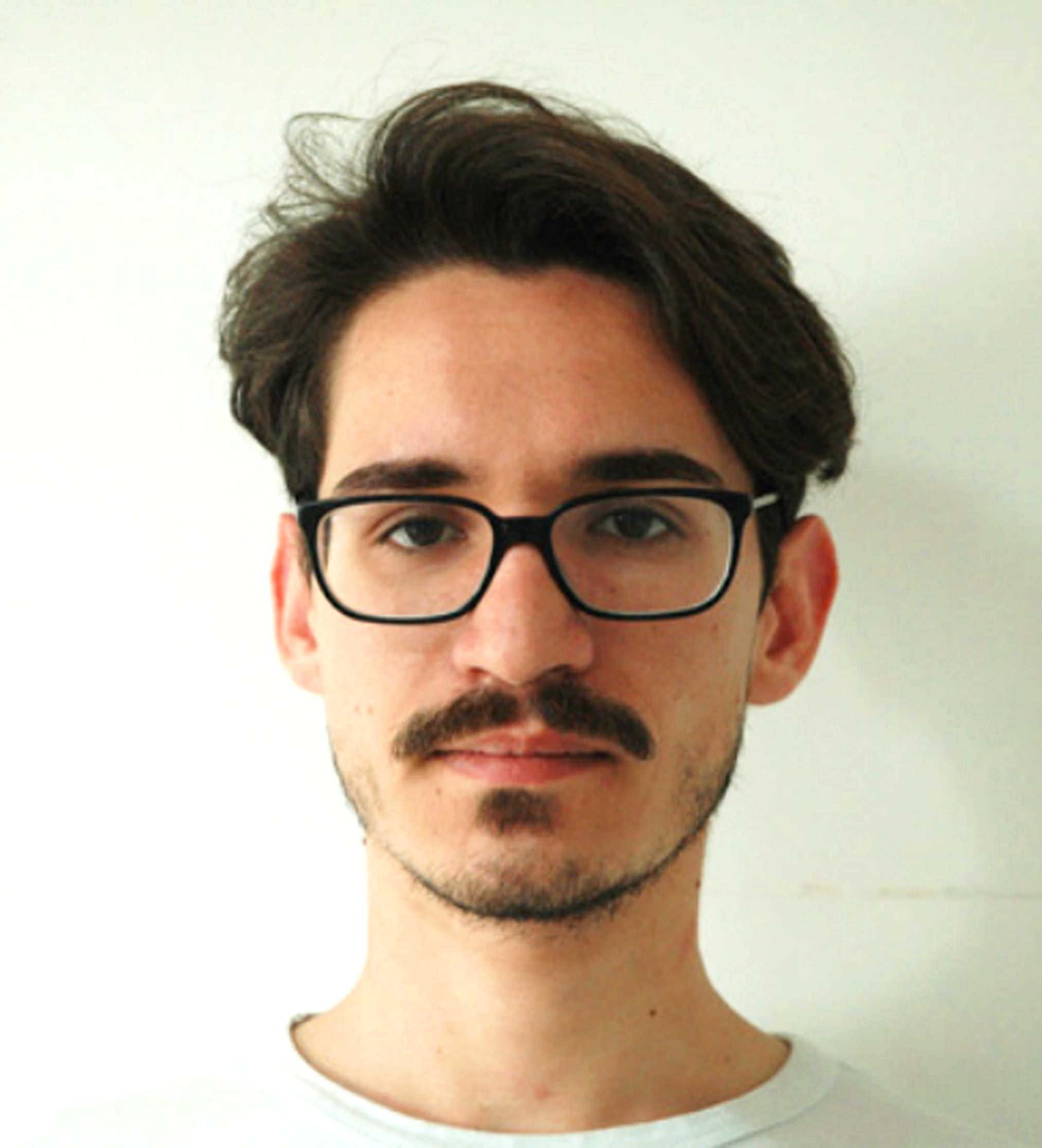
Vincenzo MASELLI- BE-FOR-ERC 2021
CCODE
Design, material experiences and stop-motion animation as didactic tools for developing creative thinking and cooperative learning
L’orizzonte epistemologico materialista nella ricerca pedagogica sviluppatosi nel ‘900 ha riconosciuto l’essenziale apporto della componente materica ed esperienziale nei percorsi di apprendimento. A partire dalla riflessione sulla filosofia dell’esperienza di John Dewey del 1938, passando per il metodo sperimentale della scuola Montessori, per i concetti di “intelligenza del gesto” di Bruno Munari e di “materialità educativa” di Riccardo Massa, ai più recenti approcci socio-materiali nel dibattito educativo internazionale, l’attenzione della pedagogia si è spostata sulle relazioni fra uomo e materia che avvengono all’interno dei contesti formativi. Questi studi hanno esplorare e teorizzato i modi in cui l’apprendimento e la conoscenza si radicano nell’azione, stimolando creatività, cooperazione e pensiero riflessivo.
Partendo da questo framework teorico e riprendendo gli obiettivi formulati dall’OECD per il 2030, il progetto di ricerca CCODE propone un metodo di apprendimento sperimentale basato sull’utilizzo degli strumenti delle scienze della comunicazione e dell’animazione in stop-motion. La comprensione e l’analisi di un testo narrativo, la trasposizione dello stesso in una sceneggiatura, la manipolazione materica e i principi progettuali dell’animazione in stop-motion sono le fasi e gli strumenti proposti per strutturare un metodo inedito e interdisciplinare volto all’apprendimento di nozioni teoriche, tecniche (obiettivi didattici) e allo sviluppo di competenze socio-emotivo-cognitive trasversali (obiettivi educativi).
L’esperienza laboratoriale presentata funge da sperimentazione pilota e sarà oggetto di validazione, operata in diverse fasi e con differenti strumenti atti a valutare l’approccio, il metodo, gli strumenti e gli obiettivi didattici ad educativi raggiunti. Una prima fase del progetto di ricerca terminerà, dunque, con la valutazione degli esiti del laboratorio pilota, e apre a future applicazioni e ulteriori verifiche del metodo formulato.

Francesca BUFALIERI - BE-FOR-ERC 2021
DREAM
Defining the Role of the aminopeptidase ERAP1 in Hedgehog-dependent Medulloblastoma: the crossroad between targeted therapy and immunotherapy
Negli ultimi anni, la caratterizzazione di vie molecolari coinvolte nei processi di tumorigenesi e una più profonda comprensione della risposta immunitaria antitumorale sono state di fondamentale importanza per lo sviluppo di nuove strategie terapeutiche per la cura del cancro.
Recentemente, abbiamo identificato ERAP1, un’aminopeptidasi del reticolo endoplasmatico e regolatore chiave della risposta immunitaria, come attivatore della via di Hedgehog (HH), una delle più importanti vie di sviluppo. Un’inappropriata attivazione della via di HH è stata associata ad un ampio spettro di neoplasie umane, tra cui il medulloblastoma (MB), un tumore cerebrale pediatrico molto aggressivo. Data l'elevata eterogeneità del MB e il fallimento delle attuali terapie, l'identificazione di nuove molecole coinvolte nel controllo della via di HH è essenziale per lo sviluppo di approcci terapeutici più efficaci e meglio tollerati.
Obiettivo principale di questo progetto proposto è dimostrare il ruolo di ERAP1 come valido bersaglio terapeutico per la cura del MB. Questo scopo sarà perseguito sia approfondendo lo studio dei meccanismi molecolari rivolti alla funzione di ERAP1, sia acquisendo nuove conoscenze sugli effetti immuno-modulatori dell’inibizione di questo enzima. Lo studio proposto potrebbe aprire la strada allo sviluppo di opzioni terapeutiche innovative per il trattamento del MB. L’inibizione di ERAP1 consentirebbe di agire su due fronti: un’azione diretta di blocco della crescita tumorale, contrastando l'attivazione aberrante della via dell'HH; un’azione indiretta di potenziamento delle cellule del sistema immunitario naturalmente attive contro il tumore.

Alexandros Maria HATZIKIRIAKOS - BE-FOR-ERC 2021
SSIEMC - Sounds, Spaces, and Identities in Early Modern Crete
SSIEMC investiga l’impatto culturale della colonizzazione veneziana di Creta (1211-1669) dal punto di vista degli eventi musicali e sonori sull’isola. In particolare, il progetto discute fenomeni di ibridazione musicale e culturale nella vita musicale sacra e profana delle principali città cretesi, applicando strumenti e metodologie prese dai sound studies all’analisi di fonti storiche e archivistiche. Inoltre, il progetta adotta prospettive prese dalla storia culturale, la sociolinguistica e gli studi decoloniali, finora poco considerati nella discussione sul Mediterraneo della prima modernità.
SSIEMC affronta domande che appartengono sia alla musicologia che alla storia culturale: la presenza coloniale Veneziana ha influenzato non solo il paesaggio architettonico e culturale delle città Cretesi, ma anche i suoni e gli elementi sonori che costituivano la vita quotidiana della popolazione locale. In che modo tali cambiamenti, imposti da un’egemonia coloniale, hanno influenzato le identità sociali, culturali e religiose delle popolazioni locali? Cosa possiamo comprendere riguardo a questo processo di cambiamento, frizione e ibridazione ascoltando i suoni delle città cretesi? Cosa può dirci questa ibridazione sonora (che non implica solo musica ma anche suoni, rumori e diversità linguistica) riguardo agli incontri culturali che sono avvenuti nel Mediterraneo primo moderno?
Per rispondere a queste domande, SSIEMC offrirà: una indagine preliminare di tutte le informazioni disponibile su musica e musicisti occidentali a Creta e la loro relazione con la popolazione locale, nonché la ricostruzione, analisi e discussione del paesaggio sonoro di una città cretese, presa come caso di studio specifico.

Federica ROSSO - BE-FOR-ERC 2021
Un approccio innovativo per la resilienza nelle aree urbane, per affrontare le grandi sfide: strategie multi-obiettivo per l’ambiente costruito
Al giorno d’oggi, il 54% della popolazione vive nelle aree urbane. Entro il 2050, la popolazione mondiale cittadina sarà di 7 miliardi. Al contempo, eventi climatici estremi come ondate di calore e piogge torrenziali sono esacerbate dal cambiamento climatico. Di conseguenza, le città nei prossimi anni saranno sottoposte a pressioni sempre crescenti. Allo stesso tempo, esse hanno il potenziale per mitigare queste sfide e contribuire al benessere dei cittadini, aumentando la resilienza. Per fare ciò, sia gli edifici che gli spazi esterni possono essere sfruttati, mentre finora il focus maggiore è stato sugli edifici. Inoltre, la prestazione dell’ambiente costruito non è mai stata considerata in maniera integrata e multi-obiettivo, ma sempre analizzando singoli aspetti legati alla resilienza. L’innovatività del progetto proposto risiede nel voler colmare questo gap provvedendo evidenze preliminari per lo sviluppo di un framework originale per la resilienza multi-obiettivo, attraverso metodologie originali integrate.
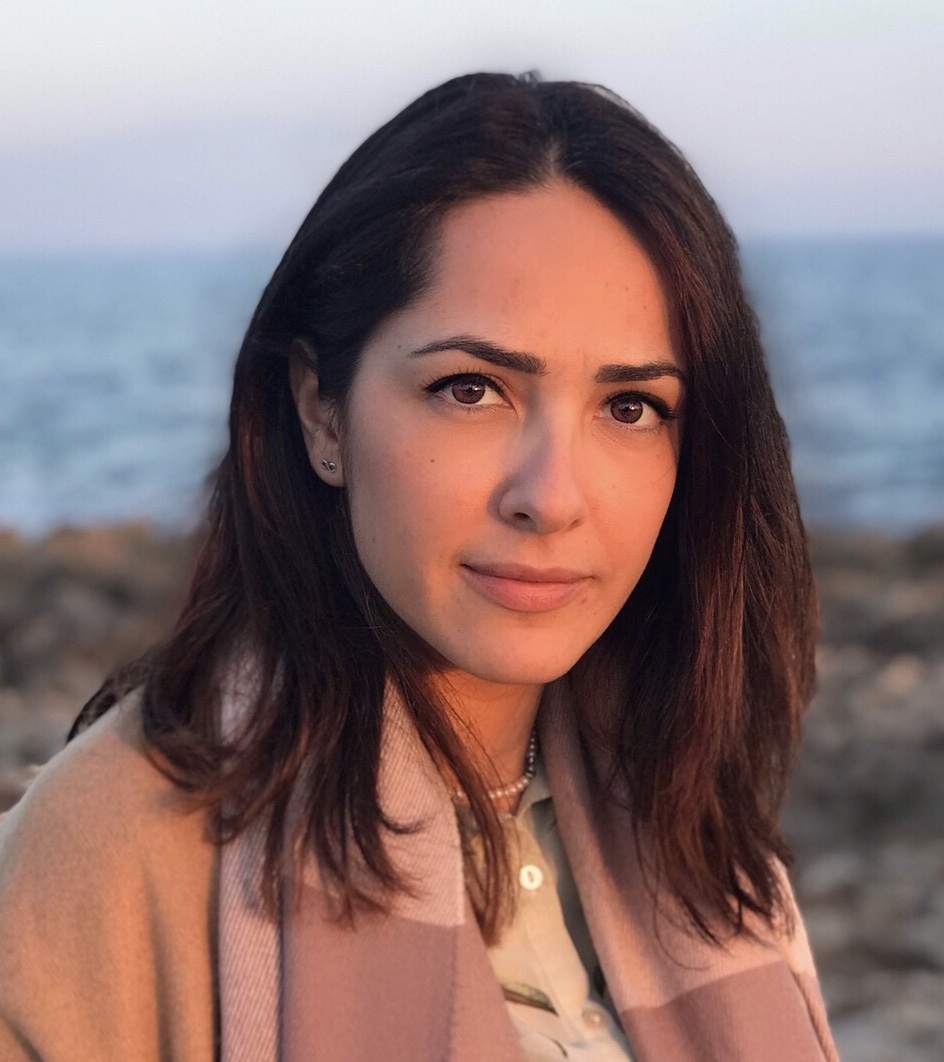
Sara BOZZA - BE-FOR-ERC 2021
ArchAnatolia
Architecture and Cultural Transfer in the Roman Empire.
Italic Building Techniques and Skills in the Provinces of Ancient Anatolia
The project aims at the historical reconstruction of the dynamics of cultural and technological transfer within the Roman Empire by investigating the diffusion and reception of Italic building techniques in the provinces of ancient Anatolia between late Hellenistic and Imperial period (1st cent. BC-3rd cent. AD). This territory is selected as a highly representative context for its long architectural tradition and its rich archaeological evidence. The project intends to contribute to the current debate on the impact of Rome on the provincial material culture, by investigating the dynamics of acculturation, exchange and interaction.
The research aims to examine the regional and urban contexts and the monumental types influenced by the combination of local and Italic construction traditions; the personalities and professionals connected with the spread of Western techniques in Asia Minor; the ideological and economic interests underlying this technological transfer. In this perspective, the research will offer new insights into the forms of knowledge transmission activated by human mobility, within the globalised network of the Roman Empire.
The objectives will be achieved thanks to a multidisciplinary methodology, based on a contextual and detailed analysis of monuments, through the creation of a geodatabase and the development of 3D models of buildings. The contribution of archaeometric data from selected case studies and literary and epigraphic sources will also be fundamental.

Davide BADANO - BE-FOR-ERC 2019
LaceEvo
Tempo and Mode of Lacewing Evolution
Davide Badano is a BE-FOR-ERC research fellow at the Department of Biology and Biotechnologies “Charles Darwin” Sapienza University of Rome. His research activity is focused on the evolutionary history, biodiversity and post-embryonal development of holometabolous insects, the most diverse group of animals on earth. The aim of the BE-FOR-ERC project is to study the factors that triggered the evolutionary success of insects and how these organisms played a role in shaping modern ecosystems. LaceEvo investigates the evolution of Mesozoic insects to reconstruct their phylogenetic affinities, behaviour, and ecological role in Cretaceous ecosystems. The application of modern investigation techniques, to the study of amber-preserved specimens, such as X-ray microtomography, reveal anatomical details that are not appreciable with traditional methods, thus allowing to perform thorough morphological comparisons with modern species. The integration of paleontological data with the morphological and molecular signal from extant species allows to run phylogenomic analyses enforcing a wide range of statistical inference methods. This holistic approach permits to achieve a better understanding of the key features that influenced the evolutionary success of insects and their ecological relevance.
 Fabio Giorgio CAVALLERO - BE-FOR-ERC 2019
Fabio Giorgio CAVALLERO - BE-FOR-ERC 2019
Arch&Dir
Archeology and Law: the Roman conquest of Lazio
In 1959 De Francisci wrote: “The reconstruction of primitive institutions requires excavation work: and when it is well conducted... one can always hope to be able to make some new contribution to the knowledge of pre history or of proto history of institutions. From Primordia Civitatis, 60 years have passed in which the “stratigraphic” investigation of roman law was further developed leading to results that proved to be indispensable for the interpretation of some archaeological finds( e.g Curiae Veteres). In the same period the knowledge of the ancient cities and of their territories has grown exponentially thanks to the creation of computerized archeological maps, the only ones capable to allow the collection and analysis of all sources(archaeological, literary, etc) necessary for the reconstruction of urban and extra-urban landscapes in different eras. Despite their parallels evolutions, archeology and law rarely met. This research intends to integrate the two disciplines using ancient Lazio in the period between the end of VI and the IV sec B.C, as a research area. The goal is to reconstruct the organization of Lazio given by Rome through the development of new legal instruments.
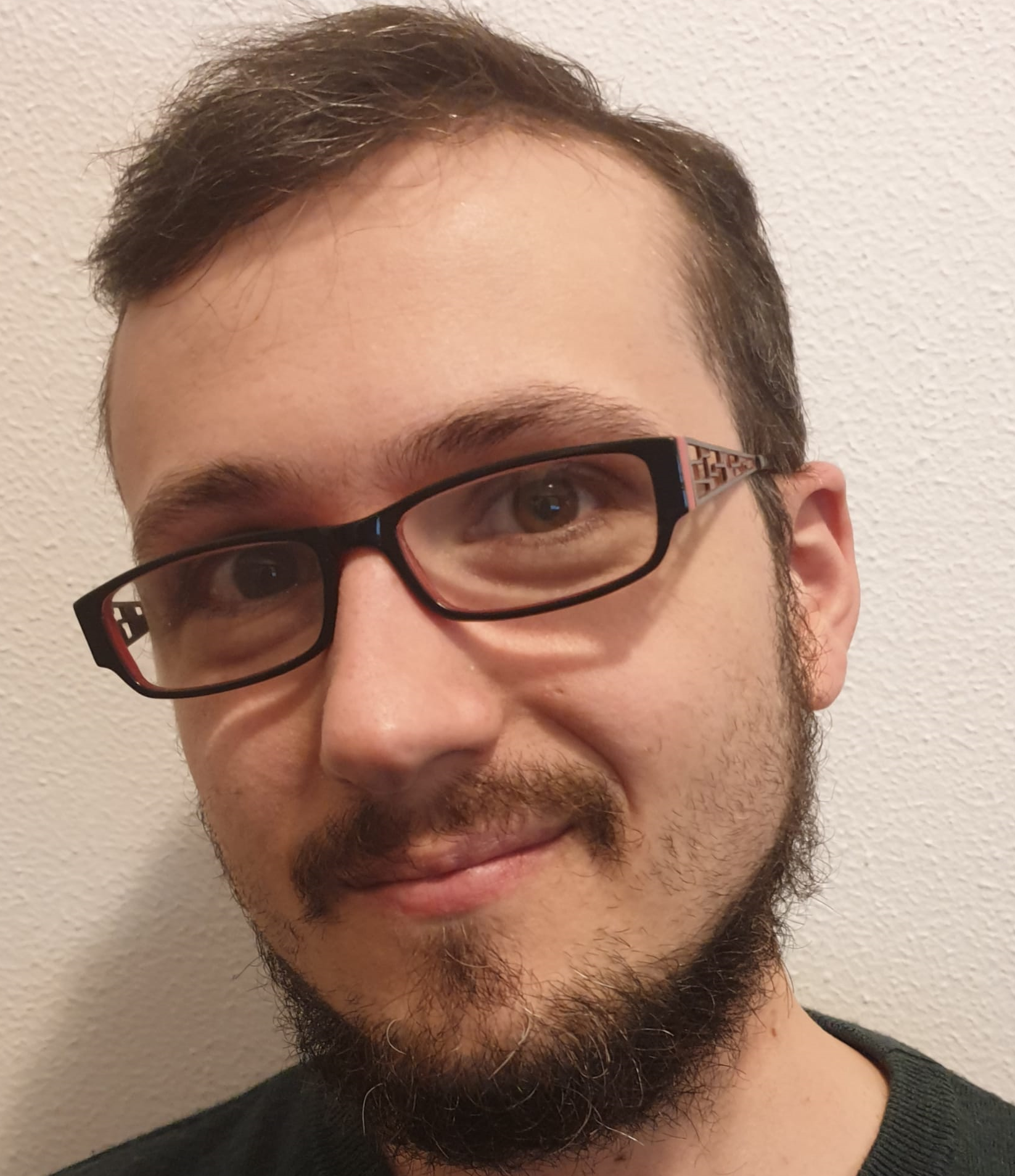
Gabriele RUFFOLO - BE-FOR-ERC 2020
SynEPTOR
A study of synaptic transmission in epileptic mTORpathies
The SynEPTOR project is focused on the study of severe diseases of brain development such as cortical dysplasia (FCD) and tuberous sclerosis (TSC), known as “mTORpathies” because they share the hyper-activation of the mTOR protein.
This hyper-activation seriously impairs the development of the nervous system and the efficacy of neurotransmission, thus causing serious consequences in patients ( such as autism, neuropsychiatric disorders and drug-resistant epilepsy).
The aim of SynEPTOR is the detailed study of neurotransmission in these pathological conditions through molecular biology and electrophysiology techniques on human tissue. This will allow to characterize the cell signaling pathways through which, starting from the mutation of mTOR, the alterations of the synaptic transmission occur and therefore to identify potential therapeutic targets that allow to recover a correct function of neurotransmission.
This project based on the study of physiological mechanisms will help to lay the foundations for transferring this knowledge also to clinical practice, with the objective of being able to restore physiological neurotransmission also in the patient.
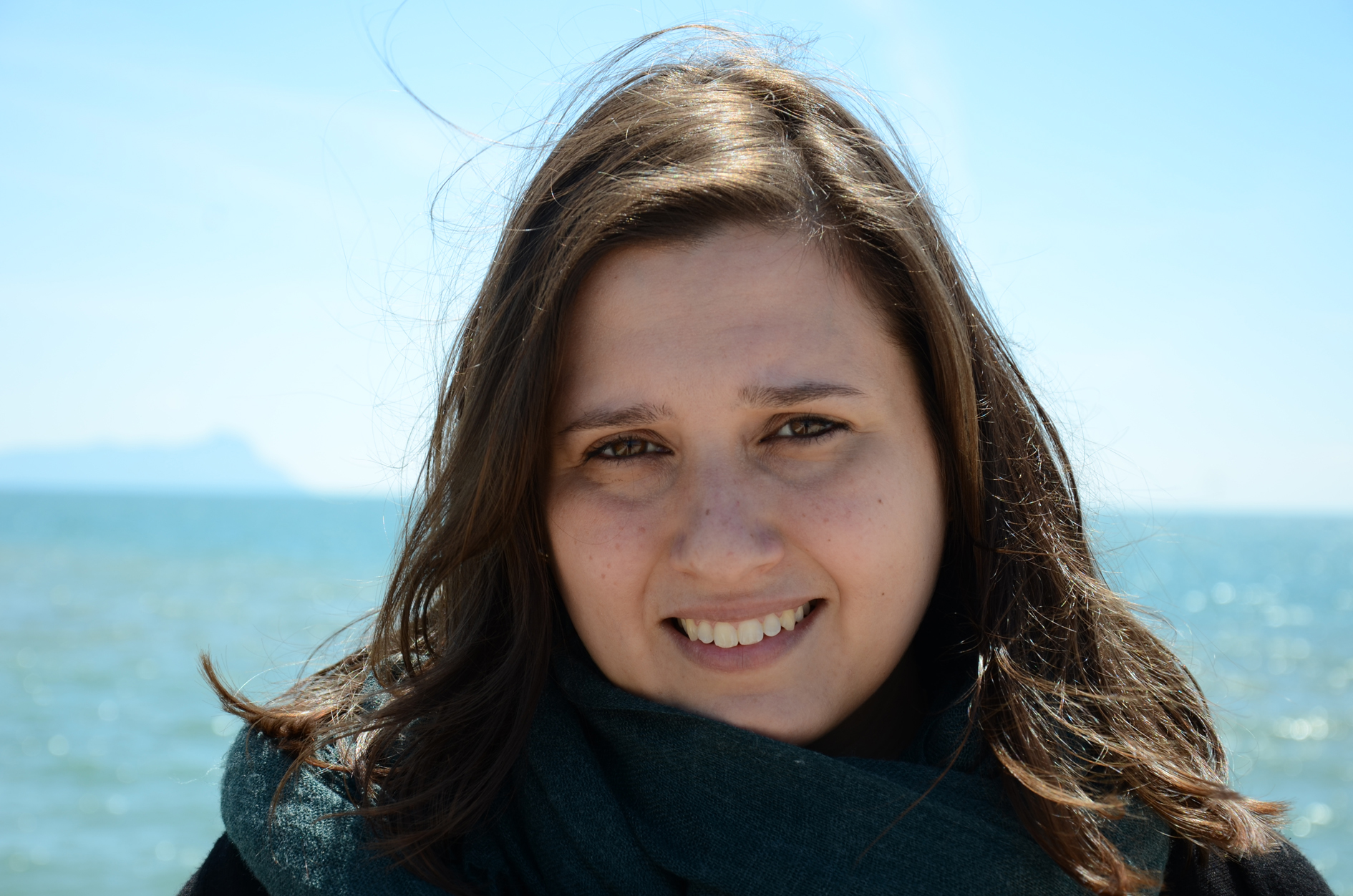
Laura EBANISTA - BE-FOR-ERC 2019
UAV (Updating Archaeological View)
Remote sensing: The use of low-altitude multispectral sensors for the archeological diagnostics
The research project involved the experimental analysis of the data acquired by a multispectral camera transported by UAV and their interpretation in the context of the archaeological diagnostics. Specifically, a Sentera 6X multispectral sensor was tested (five 3.2 mpx cameras for the spectral bands of Blue, Green, Red, Red Edge and NIR and a 20 mpx RGB camera), transported by Phantom 4 UAV. Vegetation indices were processed with the bands acquired, mainly the NDVI index. This latter shows analogies with the crop marks known in the classical photo-interpretation.
The data obtained was considered in the light of the meteorological and seasonal condition. It was decisive for the methodological analysis, in fact the phenological variations are fundamental for the correct acquisition, processing, reading and interpretation of the data.

Gianluca DI FLUMERI - BE-FOR-ERC 2020
Brain2gether
A multimodal neurophysiological framework for team performance assessment in high-responsibility environments
Nowadays, most human operational activities are based on the interaction with complex technologies and between two or more operators. It becomes crucial to be able to monitor the operator’s performances during his activities in such a complex scheme, in order to prevent unsafe and risky situations due to sudden mental and physical impairments that could lead to making mistakes. Innovative approaches, including the psychophysiologica assessment of the operator, have recently been proposed in addition to traditional methods (e.g questionnaires). In this regard, the new concept of Human Performance Envelope (HPE) has gained attention. The HPE is a theoretical model that characterizes the operator’s performance as the combination of its concomitant Human Factor (HF), such as the mental workload, the stress and the attention. However, in various high-responsibility environments, operational activities are often carried out by teams of three or more operators. In this case, the safety and success of an activity could depend not only on the performance of the individual operator but also on their effectiveness teamwork.
The Brain2gether project aims to (i) define an innovative multimodal “data-driven” approach capable of evaluating the HPE of operators by means of neurophysiological measures (EEG, ECG, GSR), and (ii) then extend it to the new revolutionary concept of Team performance Envelope (TPE), i.e the evaluation of the performance of a team of operators as a whole. These results will be achieved by using in an innovative way: the Hyper scanning technique and the methodologies deriving from the Graphs theory and from Machine Learning domain
The concept of evaluating, even in real time, the performance of a team with multiple users by abstracting a synthetic model of Team Performance Envelope is completely unexplored and it would certainly be ground breaking for the scientific community as well as for its applications for society.

Giovanna PARMIGIANI - BE-FOR-ERC 2020
ASIDE
Artificial Intelligence approach to Structuring Insanity Defense Evaluations
Insanity defense represents one of the most controversial and debated evaluations that forensic psychiatrists and psychologists perform. Despite the efforts to structure the insanity evaluation, to date, a valid model that could be useful to guide forensic psychiatrists’ criminal responsibility assessments in different jurisdictions, is lacking. This is a gap that needs to be addressed, considering the significant forensic and procedural implications of psychiatric evaluations. We developed an instrument, the Defendant’s Insanity Assessment Support Scale (DIASS), which can be useful to support, and structure the insanity assessment across different jurisdictions, in order to improve their reliability and consistency. In recent years, artificial intelligence (AI) methods and machine learning (ML) have been receiving growing attention and have been applied in diverse fields ranging from computational biology to biomedical and medical applications. In the forensic field, ML techniques have been mainly employed in the area of Neuroprediction, with applications in assessing the risk of crime recidivism in several contexts, such as sentencing. The aim of this study is to apply AI methods and ML knowledge (acquired thanks to the collaboration with the Computer Science Department in the Sapienza Research Call winning project “Artificial intelligence in psychiatry: virtual doctors for treatment recommendations among pregnant women with depressive disorders”) for the development of a model to guide and support insanity evaluations. This model will be developed through the exploitation of:
1) Retrospective data available in 320 forensic psychiatric reports made in criminal proceedings and already used as evidence in the trial, provided by 16 forensic psychiatrists from Northern, Central and Southern Italy.
2) Prospective data available from 100 forensic psychiatric reports performed with the use of the DIASS (ongoing project).
3) Expert knowledge in the relevant forensic domains.
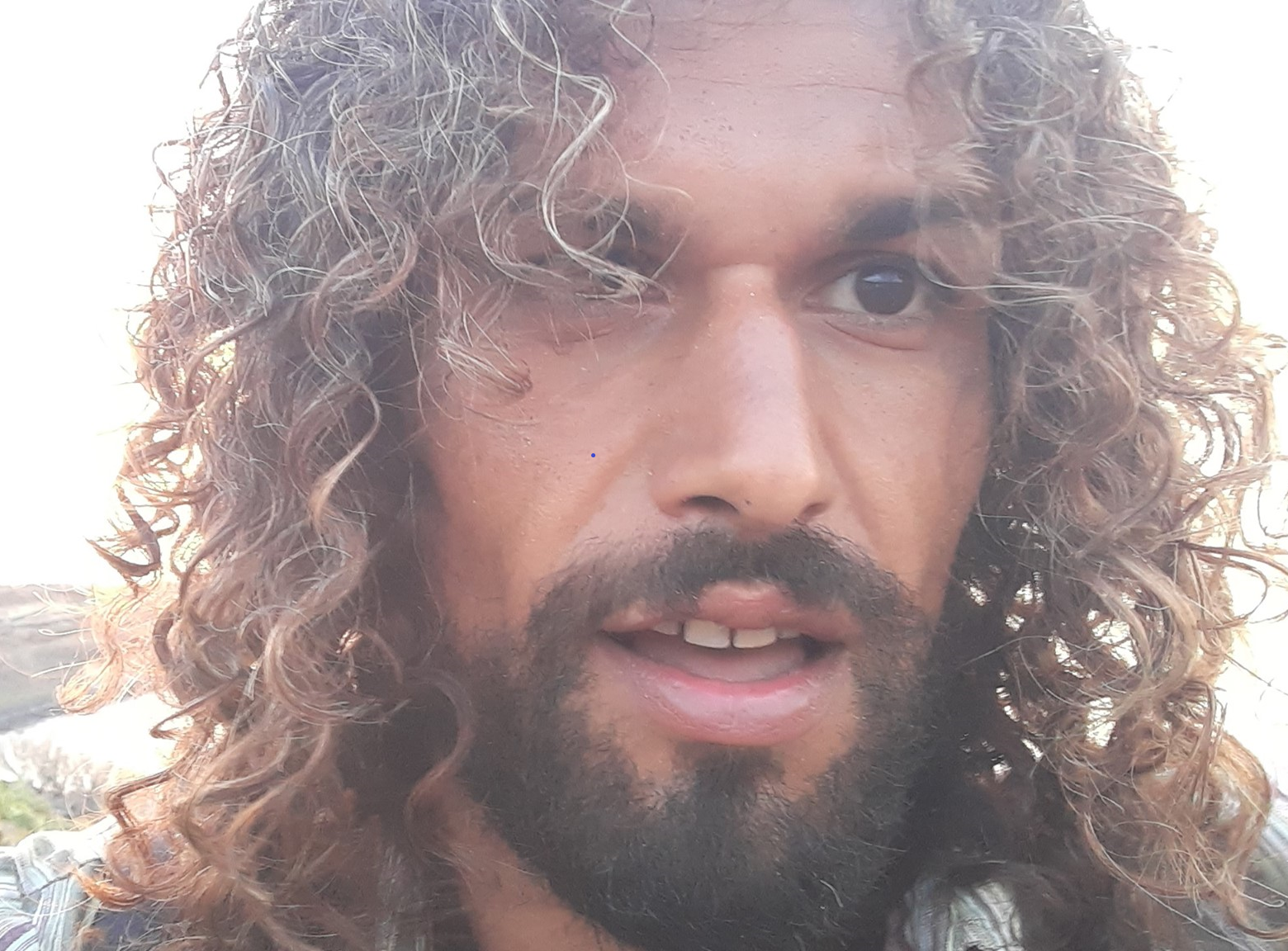
Antonio FRANCIOSO - BE-FOR-ERC 2019-2020
SulPhenOx
Nature’s gifts have been used by mankind since ancient times, from the Amazon poisons used by natives up to more modern phytochemical based drugs. Terrestrial plants have always represented a good source for natural bioactive compounds discovery, e.g. phenolic secondary metabolites. Same chemical entities present in species coming from “distant kingdoms” often show a wider variety of biological activities, also thanks to the ability to interact and “communicate” with different biological systems. An example is represented by iridoids, a central biochemical bridge between plant and animal kingdom. These compounds, synthesized both in plants and insects, are a key tool for intra-species and inter-kingdom communication and their functions and biological activities are strongly connected. Another biochemical bridging point between two distant worlds such as terrestrial and marine organisms is represented by the class of sulfur-containing compounds. My preliminary ground-breaking results have highlighted for the first time the presence of the same organic sulfur metabolites in marine organisms and in humans.
This project is aimed to identify and characterize novel key common intermediates from the metabolism of evolutionally distant living beings, with a particular focus on sulfur metabolome. Conserved bridging points in the chemical evolution of “Life” will be investigated in ancestral marine and terrestrial organisms, plants and animals. For this purpose a metabolomics-based platform with advanced analytical methods, i.e. chromatographic, spectroscopic and spectrometric methods, will be set up. Different biological systems will be used for the evaluation of the role of converging common metabolites and sulfur-containing compounds in physiological and pathological conditions. Sulfur metabolism will be furthermore investigated in relation to nitrogen and carbon in order to provide a more complete scenario and shed light on the still unclear sulfur biochemical cycle.
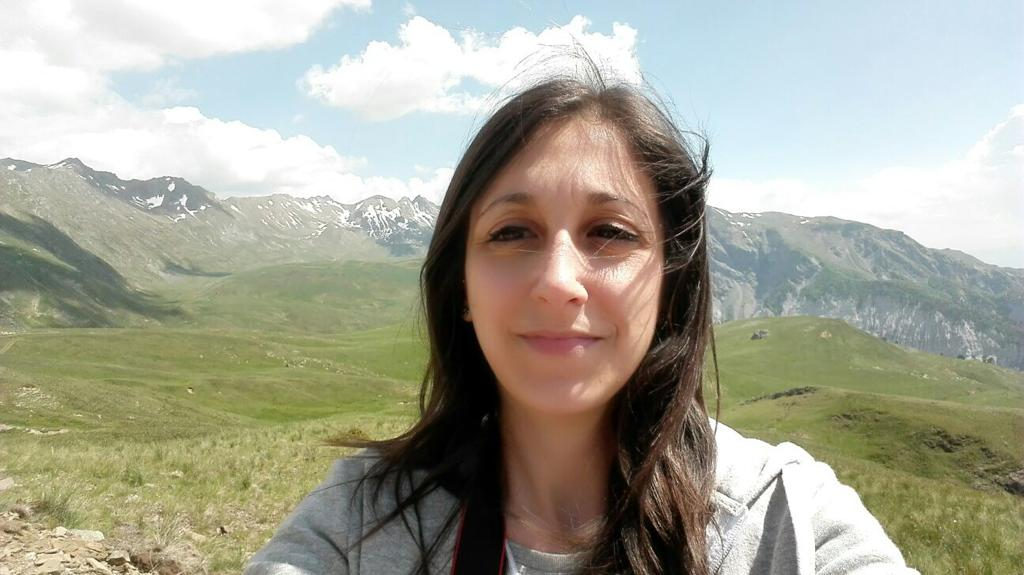
Michela PACIFICI - BE-FOR-ERC 2019
AnIMalNICHE
Anthropogenic Impact on the Mammalian Climatic Niche
Broad-scale destruction of natural habitats, in particular tropical forest, overexploitation of natural resources, and competition with/predation by introduced species are the primary sources of terrestrial biodiversity loss. Since the 1970s the human population has doubled, leading to increased anthropogenic pressures that have caused the size of animal populations to fall by almost half. However, the relationship between human activities and species distribution and abundance is complex. Every species has a climatic niche, which is the set of large-scale precipitation and temperature conditions where that species occurs. The niche can reflect physiological tolerances to these climatic conditions (fundamental niche), but can also be influenced by other factors, such as biotic interactions or human activities (realized niche). The latter is usually measured through models that relate the geographical distribution of species with climate in a given time. This implies that, according to the factors limiting the distribution of species in the time interval considered, the modelled realized niche of a species can vary.
In the AnIMalNICHE project I plan to collect historic (1970s) and current distributions of terrestrial mammals and use them as a basis for building the climatic niche of species. I will compare the two niches of each species to identify changes in their breadth. I will then identify the climatic areas lost to understand niche breadth change, and will use anthropogenic factors (e.g. land use change, change in human population density) as correlates of this change. This will enable me to understand which variables have been more important in shaping the climatic niche of species, thus allowing more accurate predictions of their future potential distribution. I will focus my analyses on mammals because they have greater availability of historical distribution data and show also the largest contractions in their distribution compared to other taxonomic groups.

Angela POLA - BE-FOR-ERC 2020
IMAG-O - Beyond the Images? The organic residue analyses (ORA) and a new interdisciplinary approach for the study of uses and functions of figured pottery
Traditionally, figured pottery has mostly been analyzed with the attributionistic/chronological purposes of identifying painters and workshops and cataloguing its rich figurative repertoire, underestimating the undeniable fact that beyond the rich mythological representations a figured vase is also a functional object whose shape and decoration are closely connected to its practical use and function within society. The hermeneutic potential of the contexts of provenance of these objects have therefore often been underestimated, and their functional aspect has been almost completely overlooked. By comprehensively addressing this weakness, IMAG-O aims to fill in this gap through a ground-breaking interdisciplinary approach based on the interconnection between traditional archaeological methodology, archival research and the systematic application of chemical investigation to identify the commodities contained in the vases (organic residue analysis: ORA). The study of vessels with secure contextual data belonging to one of the most important red-figure production centres of the entire Etruscan-Italic area - the Faliscan red-figure pottery of the 4th B.C.- will represent cutting-edge research, which will allow for a complete investigation of the relationship between shapes and contents, their consistency and possible variation in connection with different contexts of use (necropolis, sacred areas, inhabited areas) and the possibility of establishing specific links between functions and representations. A comprehensive analysis of the uses and functions of figured vases will be presented for the first time, opening up new research perspectives for the study of other Mediterranean contexts.

Simone MELZI - BE-FOR-ERC 2020
NONLINFMAPS
Non-linearity in functional representation of geometric data
The functional maps (FM) is an effective and well-established method for shape matching in several applications such as computer graphics, medical imaging, computer-aided design, and biomedical data analysis, among many others. In the last few years, a large quantity of research has been dedicated to this topic, giving rise to new analysis and implementation of innovative methods. The interest in FM arises from its efficiency, its effectiveness and the several applications in which FM can be involved. Given two 3D shapes, FM focus on the correspondence between the functional spaces defined on two surfaces rather than between the points of their 3D embeddings. A small matrix can compactly encode the FM representing the functional spaces on a fixed basis. A common choice is to approximate the functional space as a linear vector space through a truncated subset of the Fourier basis. In most cases, only the vector space structure of functional spaces is exploited, but not their algebra, i.e., the ability to take pointwise products of functions. With NONLINFMAPS, I aim to reinforce the FM injecting the non-linearity in the framework through new representations of the functional spaces and innovative techniques for the conversion of the FM in a point-to-point correspondence. The main motivations of this proposal are twofold. First, there is evidence that non-linearity encodes essential map properties. Second, the non-linearity of maps between embedded surfaces makes non-linearity more suitable to extract high-quality correspondences from FM. Based on these new insights, I will design efficient algorithms and entirely new applications for different shape representations, such as graphs, point clouds and volumetric data.

Davide PIERANGELI - BE-FOR-ERC 2019
SPIM
Spatial Photonic Ising Machines
Classical and quantum physical systems that evolve according to an Ising model are currently attracting broad research interest as novel computing architectures for solving optimization problems that cannot be tackled efficiently on large scales by conventional electronics. The SPIM proposal aims at developing a novel class of photonic Ising machines that exploits the spatial degree of freedom of light for parallel processing large-scale spin systems. Employing spatial light modulation technology in neural network schemes, the project intend to demonstrate a major breakthrough in the realization of high-speed and scalable novel computing hardware for hard optimization problems and machine learning implementations.
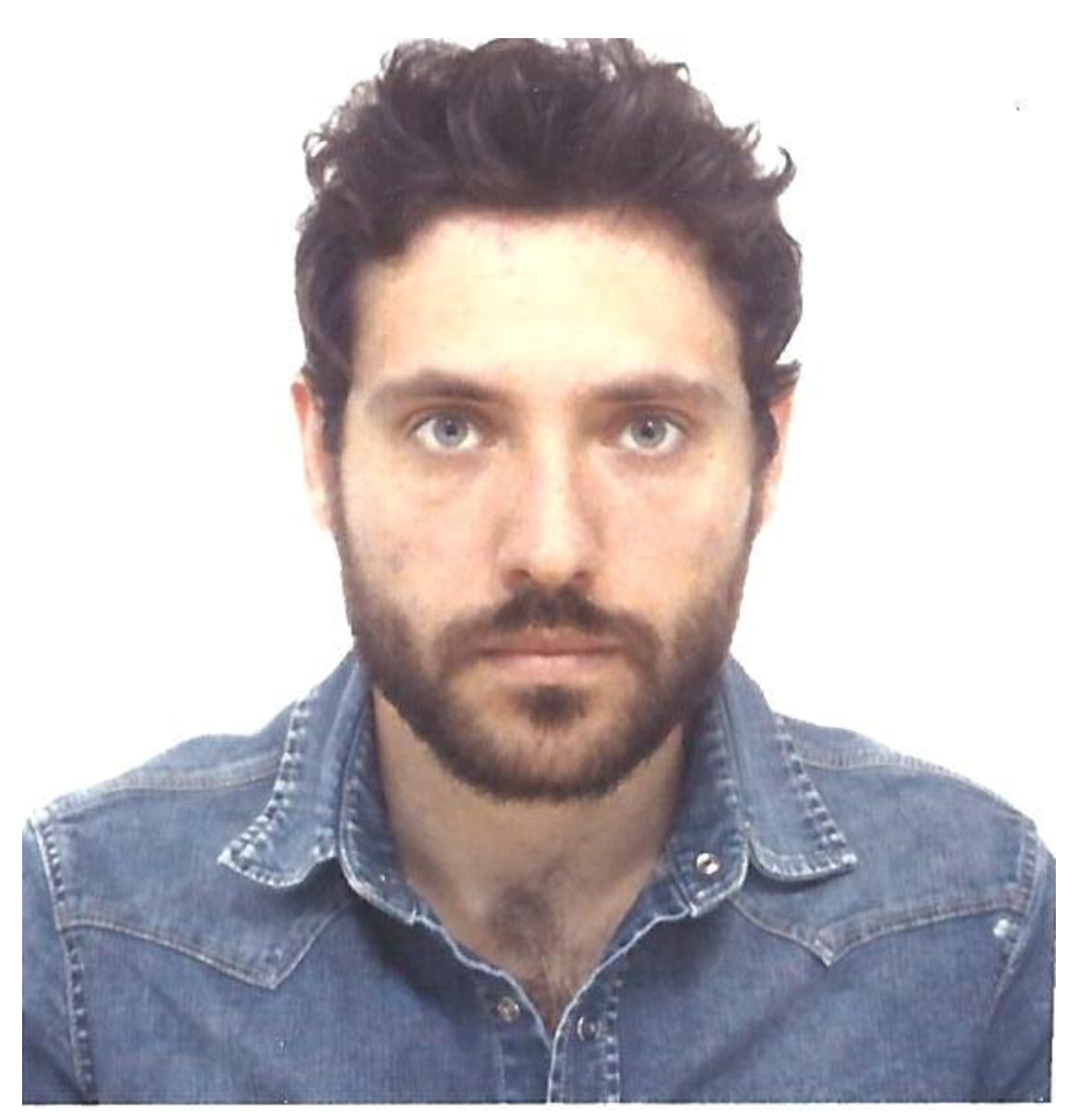
Francesco DE STEFANO - BE-FOR-ERC 2020
Ur-Sit
Urbanization in southern Italy. Social structures and changing landscapes at the dawn of the city((8th-7th centuries BC)
The Ur-SIt Project aims to analyze the rise of urbanization in Southern Italy by examining changes, transformations or continuities in the social structure and in the settlement landscapes of the communities involved in this phenomenon.
Over the last thirty years our knowledge on ancient cities and their territories has considerably grown, thanks to new acquisitions in the fields of archaeological research and historical studies. At the same time, the development of innovative technologies and spatial analysis models, such as digital mapping techniques and Information Systems, have provided new effective tools for the management and study of the numerous and heterogeneous information sources (archaeological, environmental, literary, epigraphic etc.) relating to the ancient world and its transformations over time. Nevertheless, Southern Italy still lacks a large-scale and diachronic research program addressing the origin and evolution of the urban form in its physical dimension (town planning, territorial strategies) as well as in the socio-political one. The Ur-SIt Project wants to focus the attention on the genesis and organization of the city in this area by examining the social processes and transformations in the settlement patterns of the communities involved in this phenomenon between the 8th and 7th centuries BC. This will be done by applying an innovative and multidisciplinary approach, based on up-to-date social and spatial analytical methodologies and on the implementation of a Geographic Information System (GIS) designed to collect and manage all the available archaeological, historical and environmental data on these contexts. This will allow the development of new exegetical models and research perspectives on the formation of the very first urban landscapes in Southern Italy.
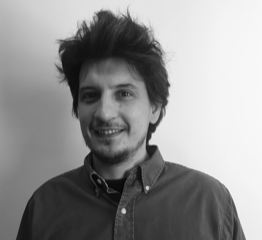
Matteo DELEIDI - BE-FOR-ERC 2020
REVOLUTION
Rethinking Economic growth: macroeconomic implications of mission-oriented innoVation pOLicies and pUblic invesTment in InnovatiON
REVOLUTION aims at promoting a fundamental shift in the way fiscal policies are conceived by providing relevant guidance for re-orientating them towards those classes of public investments that are able to stimulate economic growth in the most effective way. This would allow to meet the objectives of the 2030 Agenda for Sustainable Development Goals of fostering innovation and guaranteeing inclusive and sustainable economic growth, which is today even more relevant for addressing societal crises as the one produced by the COVID-19 pandemic. To do this, a new field of research will be explored by investigating the macroeconomic effects generated by public investments in innovation and mission-oriented innovation policies, which are currently at the core of the industrial strategy of several advanced countries. The ambition of REVOLUTION is to lay the foundations for a pioneering and multidisciplinary approach combining key insights from both the literature on public and private innovation and the macroeconomic literature on fiscal multipliers and secular stagnation with advanced empirical and computational models.

Maria FALLICA - BE-FOR-ERC 2019
PatrAntOr
Origen Among the Reformers: an Authoritative Voice in the Patristic Anthologies
Like a witness in open court, or a building block in a new edifice, the support of ecclesiastical writers from Antiquity was often claimed in the early years of the Reformation, when the urgency to answer the accusations of novelty and breakdown of Christianity from their opponents was more acute. Patristic anthologies were the perfect medium in a battle for the minds and hearts of believers, with the passages from the Fathers of the Church selected in order to prove, explain, and promote the articles of the faith and testify to its antiquity. My project is first of all to investigate these important yet still unknown texts from the point of view of their reception of Origen of Alexandria, one of the most important theologians of Early Christianity. My work will then analyze the legacy of Origen’s thought in an intimate connection with the construction of orthodoxy and the history of exegesis in an era of religious turmoil. I will combine a philological analysis able to shed light on the relationships of dependence between the anthologies with the methodology of reception history, which will reveal Origen’s peculiar role, focusing in the most important doctrinal dogmas of the era. The project will therefore offer a more refined analysis of the historical reasons of Origen’s reception and its consequences in the self-understanding of the churches and their doctrinal and pastoral attitudes. At the same time, my approach will derive its uniqueness from the analysis of texts which are almost completely unstudied, but nonetheless of enormous interest for the history of teaching, debating, and learning with the Fathers. My project will promote the knowledge of these texts in the academic community and beyond, offering an innovative point of view of the Nachleben of Antiquity in the modern age, highlighting the conflict of interpretations of Western Christianity through the tracing of the destiny of Origen's thought.

Francesca GHIRGA - BE-FOR-ERC 2020
NATCHEM
Natural product chemistry as a useful tool to develop new drugs for the treatment of Hedgehog-dependent tumors
State of the art: Aberrant reactivation of Hedgehog (HH) signaling is responsible for a broad spectrum of tumors, such as medulloblastoma (MB). At present, the development of inhibitors acting on GLI1, the final effector of HH signaling, represents a unique opportunity to overcome the pitfalls of the existing anticancer therapeutic schemes to treat Hh-dependent cancers. In a previous study, Vismione E was identified as a small molecule able to bind GLI1and interfere with DNA interaction.
Aim: This study aims at providing an efficient and cost-effective total synthesis of the Hit compound Vismione E. In addition, to gain insight into the molecular mechanism behind the HH signaling modulation of Vismione E, the rational designed of a first generation of anthranoid derivatives will be developed combining organic chemistry and molecular modelling. The toxicity, delivery, biodistribution to brain and cerebellum, and the efficacy of the most promising compounds will be evaluated in a preclinical murine of Hh-dependent MB model.
Experimental Design: The physical availability of Vismione E by isolation from plant is unfeasible due to important limitations. To overcome these issues, the total synthesis of Vismione E is proposed. In addition, taking into account the chemical instability of the vismione scaffold, another important challenge will be the development of a synthetic route for the preparation of several Vismione E derivatives featuring the more stable anthraquinone and anthrone cores. Several formulation strategies will be investigated to encapsulate Vismione E and/or the most promising derivatives in polymeric micelles or nanocaspule, to promote the delivery of the drug. The Vismione E and/or the most promising derivatives formulation will be tested both in in vitro and in vivo HH-dependent MB models, and the biodistribution in brain and cerebellum will be assessed by the High-Performance Liquid Chromatography (HPLC) combined with Mass Spectrometry (MS).
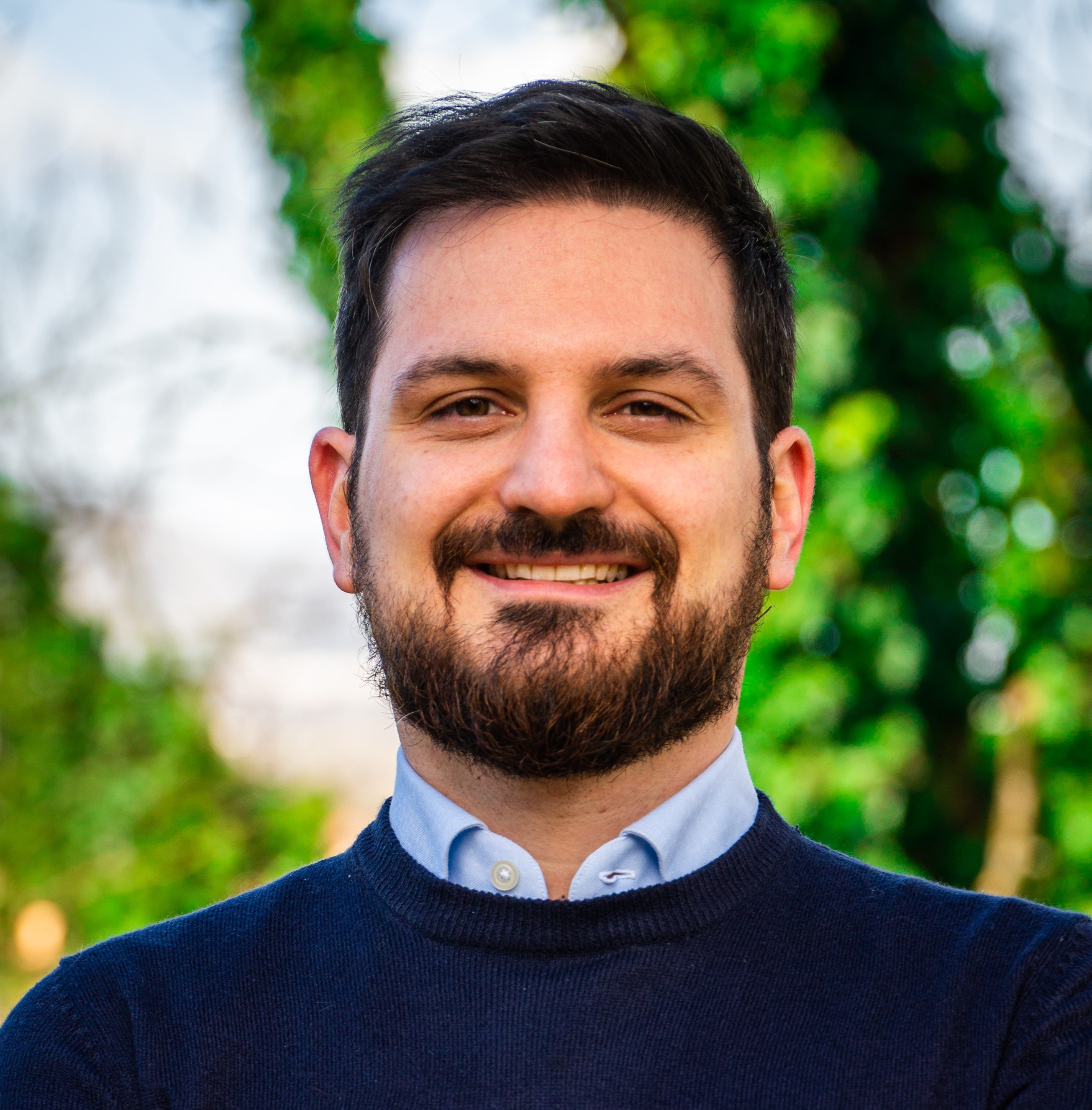
Riccardo PATRIARCA - BE-FOR-ERC 2019
RESCUE
Resilience Engineering for Safety in Complex Unexpected Events
Airplanes, air traffic control towers, critical infrastructures and service plants: these are examples of systems where even small perturbations in performance have an intrinsic potential for disastrous consequences, often generated by unexpected behaviors. In recent years, the technological evolution linked to automation and digitalization has made the interactions between technical, human, procedural and organizational aspects of each system extremely dynamic. The notion of ‘complex socio-technical systems’ is used to characterize this symbiotic link.
Starting from the theory of Resilience Engineering, this project aims to develop a multi-method approach for the analysis of complex socio-technical systems through a multidisciplinary perspective that extends traditional risk analysis with network theory and dedicated ontological formulations. By modeling the structural and functional relationships of a system, RESCUE aims to extend the applicability of the Functional Resonance Analysis Method (FRAM) with network analyses based on the concept of multiplex networks. Initially the analysis will be developed in the context of operational safety management for aviation, to obtain then a conceptual formulation extensible in other domains.

Silvia PICAZIO - BE-FOR-ERC 2020
Cerebellar
Cortical networks in self-regulation of eating control
Silvia Picazio is a post-doc researcher and a clinical psychologist specialized in the use of cognitive-behavioral therapy. Her research interests have always concerned the use of non-invasive stimulation techniques for the study of the healthy and pathological human brain, with particular attention to the cognitive functions of the cerebellum. The goal of her project “Cerebellar-cortical networks in self-regulation of eating control” is to demonstrate that cerebellar activity is crucial in controlling eating behavior. For this purpose, Dr Picazio is characterizing healthy volunteers and patients suffering from anorexia nervosa through a combined approach of neurophysiological techniques and cognitive experimental paradigms aimed at investigating the cortico-cerebellar networks and inhibitory control processes related to food stimuli. The FOODCONTROL project is also designed at studying the effects of the application of transcranial direct current stimulation (tDCS) to the cerebellar cortex in order to identify innovative intervention strategies in anorexia nervosa. The information acquired through a combination of behavioral and advanced neurophysiological approaches (double pulse transcranial magnetic stimulation -TMS- combined with high intensity electroencephalography- EEG) will be fundamental for the understanding of neurophysiopathological and cognitive mechanisms at the base of eating behavior and for the development of innovative strategies of prevention and treatment of eating disorders
ADD SAPIEXCELLENCE
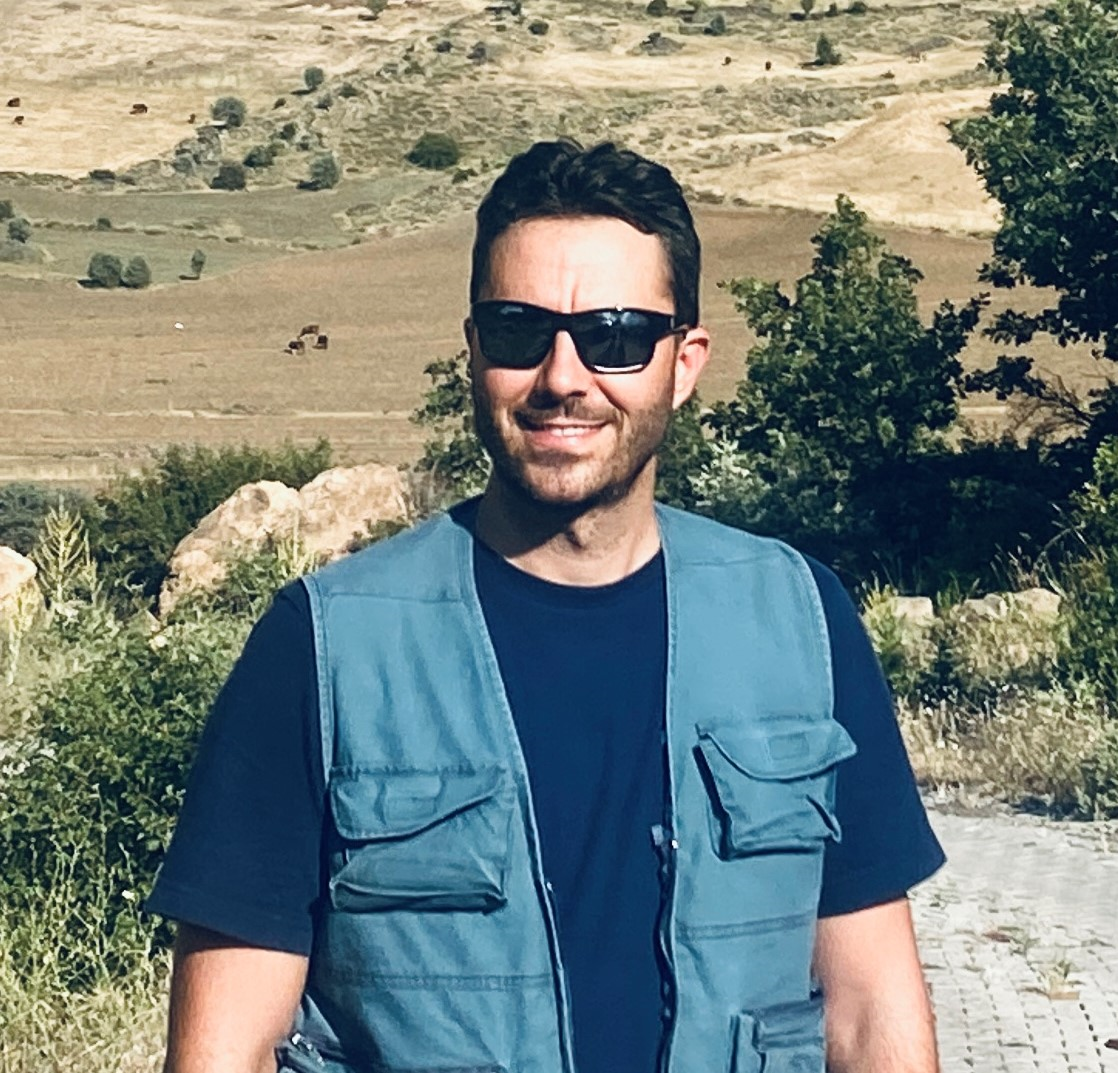 Ivan Sunyé Puchol – ADD 2024
Ivan Sunyé Puchol – ADD 2024
BlaCorTephra
Correlating Central Anatolian tephras to synchronise the Black Sea sedimentary record and evaluate the regional volcanic hazards
Il progetto mira a correlare (cripto-)tefriti di una carota marina nel sud-est del Mar Nero attraverso l’impronta chimica. Alcuni strati corrispondono a ceneri distali dell’Ignimbrite Campana (Campi Flegrei, Italia) e dell’eruzione minoica (Santorini, Grecia), mentre molti altri provengono probabilmente dalla Provincia Vulcanica dell’Anatolia Centrale (CAVP). Grazie ai dati composizionali, testurali e cronologici del progetto MSCA-PÜSKÜRÜM, abbiamo individuato collegamenti con i vulcani Hasandağ, Acıgöl e Erciyes. Le analisi degli elementi in traccia in corso rafforzeranno queste correlazioni, affinando il modello cronologico della carota del Mar Nero e sincronizzandolo con i registri paleoambientali regionali. Il lavoro servirà anche a testare nuovi strumenti di Machine Learning per la correlazione delle eruzioni e, insieme ai parametri sorgente eruttivi, ad alimentare modelli di dispersione delle ceneri per migliorare la valutazione della pericolosità vulcanica in Anatolia, Europa e area mediterranea.
 Cécilie EXERTIER - ADD 2018
Cécilie EXERTIER - ADD 2018
X-PROBE
Advanced XFEL and synchrotron-based probes of protein structure and dynamics
The ITN X-Probe has impacted upon our understanding of protein conformational
dynamics from femtoseconds to seconds: one of the most challenging problems in structural biology, and yielded technological advancements in diverse fields, from pharmacology to nanotechnology. We developed serial approaches at synchrotron radiation facilities to pursue time-resolved diffraction studies of irreversible protein reactions and we exploited the revolutionary possibilities created by X-ray Free Electron Lasers, which combine ultrafast X-ray pulses with high brilliance focusing capabilities extending time-resolved serial crystallography on unprecedented time-scales. Therefore, we have developed new tools for extracting new insights in protein structural dynamics from femtoseconds to seconds that exploit the extreme X-ray brilliance of current and developing X-ray user facilities. The project builds on the innovation and network created during the ITN X-Probe Action and it is based upon two complementary, interdisciplinary objectives: 1) Synchrotron based Studies of Protein Structural Dynamics; and 2) X-ray Free Electron Laser based Studies of Protein Structural Dynamics. We propose to unveil the structural dynamics of neuroglobin both in the crystal state and in solution by utilizing a set of mutants engineered and produced in the context of the X- Probe collaboration. Indeed, we have recently produced a “CD-less Ngb”, a rationally engineered form of neuroglobin which could allow us, for the first time, to observe the structural events triggered by reversible ligand binding in this intriguing actor in the scene of neuronal cells protection. Therefore, our results will provide understanding of basic principles in protein structural dynamics and pave the way toward understanding the mechanism exploited by neuroglobin to exert neuroprotection upon hypoxia and oxidative/radical insults.
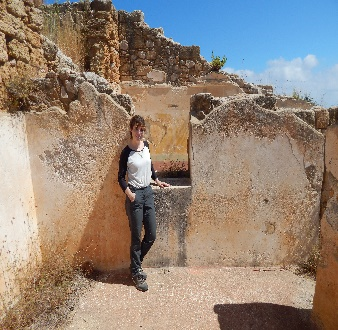
Ada CORTÉS - ADD 2020
TETRASTYLON
Reinforcing an excellent scientific study of a domus with hybrid cultural conception sheltered by a global civilization of antiquity: THE TETRASTYLE CURTYARD HOUSE
Tetrastylon+ aims to broaden the scientific excellence of the knowledge of the Roman domestic architecture focused on the Tetrastyle Courtyard House typology. This new typology has been studied thoroughly thanks to an MSCA Project and has filled an important gap in Roman Architecture and
Archaeology. This ancient house is a hybrid concept of the Greek scheme of the house and a specific Roman courtyard type which usually has been misinterpreted by the specialists. This project allows us to analyse the cultural exchanges between the two main European ancient cultures (Greek/Roman) and their effect on domestic life. The Tetrastylon project (2018-2019) allowed the consolidation, definition, and standardization of this typology in the South of Italy and Sicily. The scientific results have been widely accepted by the scientific community. But now, thanks to the Add SAPIExcellence 2020, this project wants to take one step further. After studying the Western Mediterranean examples, it is mandatory to approach similar issues and carry out fieldwork on some houses in Roman Greece, applying the same successful methodology and analysis. Tetrastylon+ also wants to create an open web portal following Linked Open Data standards. One of the aims of the project is to freely offer the generated data.
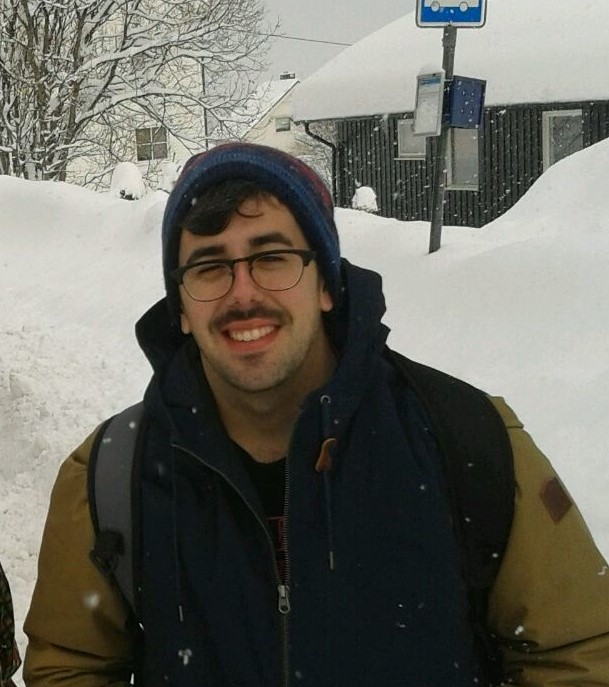
Alvaro CENTRON - ADD 2021
CircCaPath
Role of circular RNAs in cancer pathogenesis
Circular RNAs (circRNAs) are a class of highly stable covalently closed and single-stranded non-coding RNAs which in recent years have emerged as regulatory elements in several diseases including cancer. Thus, understanding their molecular function and involvement in cancer progression is of high importance. Moreover, since circRNAs have been found in the blood, they have been proposed as useful diagnostic biomarkers. In this context, CirCaPath will focus on: 1) the discovery of the role of a specific circRNA, circAFF1, in Rhabdomyosarcoma (RMS), a childhood tumor; indeed, circAFF1 is highly upregulated in RMS and its depletion inhibits the migration of RH4 cells, an RMS derived cell line, 2) the identification of circRNAs that could be used as biomarkers for early detection of RMS and for the study of their progression.

Ivon CUADROS - ADD 2021
FoodNATURE
Food to the power of nature. Enhancing agricultural productivity through biodiversity and ecosystem services in a changing world
Reduced rates of crop production and stagnant yields are deteriorating global food security across the world. The effects of the degradation of natural resources including pollinators decline, pest outbreaks, droughts and eroded soils are overpassing human’s capacity to produce enough quality food for all. At the same time, there is increasing evidence of the essential role of biodiversity to keep multiple ecosystem functions that are critical to food production. Despite this, nature’s input continues to be overlooked by agricultural scenarios, compromising the possibility to achieve the Zero hunger – Sustainable development goal. Through a systematic review of wild pollinators and crop dependency, I will measure crop susceptibility to declining pollinators. Based on species’ ecological requirements, and a combination of spatial records and environmental variables, I will model future pollinator distribution and availability, under different scenarios of land use and climate change. The model will highlight crops and regions with a major risk of disruption due to a pollination gap and will also help to define landscape management actions that support the long-term sustainable production of food through the conservation of biodiversity.
SEAL OF SAPIEXCELLENCE

Chiara SORGENTONE - SEAL 2020
BOUNDARIES
Boundary Integral Methods for Smooth and Fractal Surfaces
In recent years, the boundary integral method (BIM) has proved itself to be a valuable tool for the solution of many physical and engineering problems. One of the main advantage of this approach is that the equations are defined only at the boundary, which then plays a key role. The project will compare the application of a BIM respect to different geometries: (a) smooth surfaces with spherical topology and (b) fractal domains. We are interested in those problems with large surface to volume ratio, where the dynamic at the interface is very important and it is then natural to consider integral equations. Specific motivations with physical applications arise for both cases a) and b): a) We want to study surfactant-covered drops in electric fields: the surfactants are compounds that change the surface tension between liquids and are widely used in engineering applications. This quantity lives on the interface only and follows the surface convection- diffusion equation which is coupled with an evolution equation for the surface (Stokes equations). The effect of the electric field is studied with the Leaky Dielectric model, that we solve using a BIM, that is also used to solve the Stokes equations. We will investigate: 1) different approaches to deal with the Laplace-Beltrami operator that appears in the convection-diffusion equation for the surfactant; 2) the effect of the surface charge convection on the full Melcher-Taylor Leaky Dielectric model. b) We consider Venttsel’ problems in fractal domains. In the framework of heat propagation, a Venttsel’ problem models the heat flow across highly conductive thin boundaries, which turns out to have several applications in physical and industrial processes (e.g. hydraulic fracturing, electrochemistry etc). We will reformulate this problem using a boundary integral approach for non-smooth surfaces and develop a suitable numerical method to study the problem numerically.
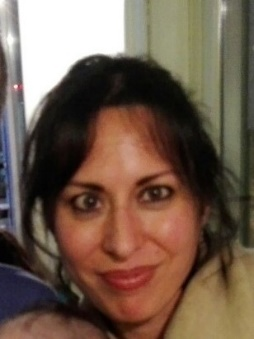
Ada CARUSO - SEAL 2020
InteSS
Integrazione, intellettuali e seconda sofistica: il contributo delle fonti letterarie all’analisi antropologica
The project for the Seal of SAPIExcellence 2020 was developed at the Department of History, Anthropology, Religions, Art history, Media and Performing arts (SARAS) under the supervision of Prof.ssa Laura Faranda. The project is linked to the MSCA IF 2019 proposal, which is based on the integration dynamics in the eastern provinces of the Roman Empire during the age of the Second Sophistic. Particularly, the project looks at some works of the most important authors of this cultural movement (Plutarco, Dione di Prusa, Elio, Aristide, Luciano, Libanio, Temistio, Sinesio), in which the project aims to find messages of social integration, with a focus on women, strangers and members of different religions. The aim is to build a strong ideological frame for the project to be submitted to the MSCA IF call 2021 and to build an initial data collection. In agreement with the supervisor, besides the research activity, also dissemination activities are scheduled.
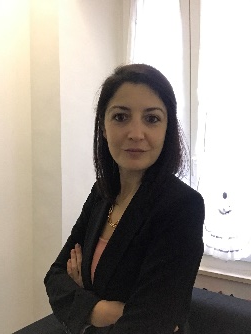
Maria MORENA - SEAL 2020
EMOCANNABINOID
Endocannabinoid-mediated neuroglial communication and regulation of contextual fear extinction under stress: implications for the treatment of trauma-related disorders
It is assessed that more than half of the population of the western countries went through a traumatic event in their life and that roughly 1 person out of 12 suffered from PTSD (post-traumatic stress disorder). Nevertheless, since today the brain mechanisms that regulate this pathological condition are largely unknown, current therapeutic approaches are only partially effective. Moreover, the problem is even more complicated as in the process of erasing traumatic memories a high level of stress is implied, which affect the functionality of the hippocampus, an important region of the brain linked to the erasing process of the fears. Since research studies on animals showed how the empowerment of the endocannabinoid system facilitates the process of erasing, it is fundamental to understand how to use the association between the endocannabinoid system and the PTSD, in order to develop new therapies for this pathology. Through a combination of electrophysiology techniques and behavioural pharmacology, this project aims to identify how stress affects the process of erasing traumatic memories and the engagement of the endocannabinoid system. The results from this study will play an important role in the development of new therapeutic approaches for people suffering from PTSD, whose number is rapidly increasing after the outbreak of Covid-19 pandemic.
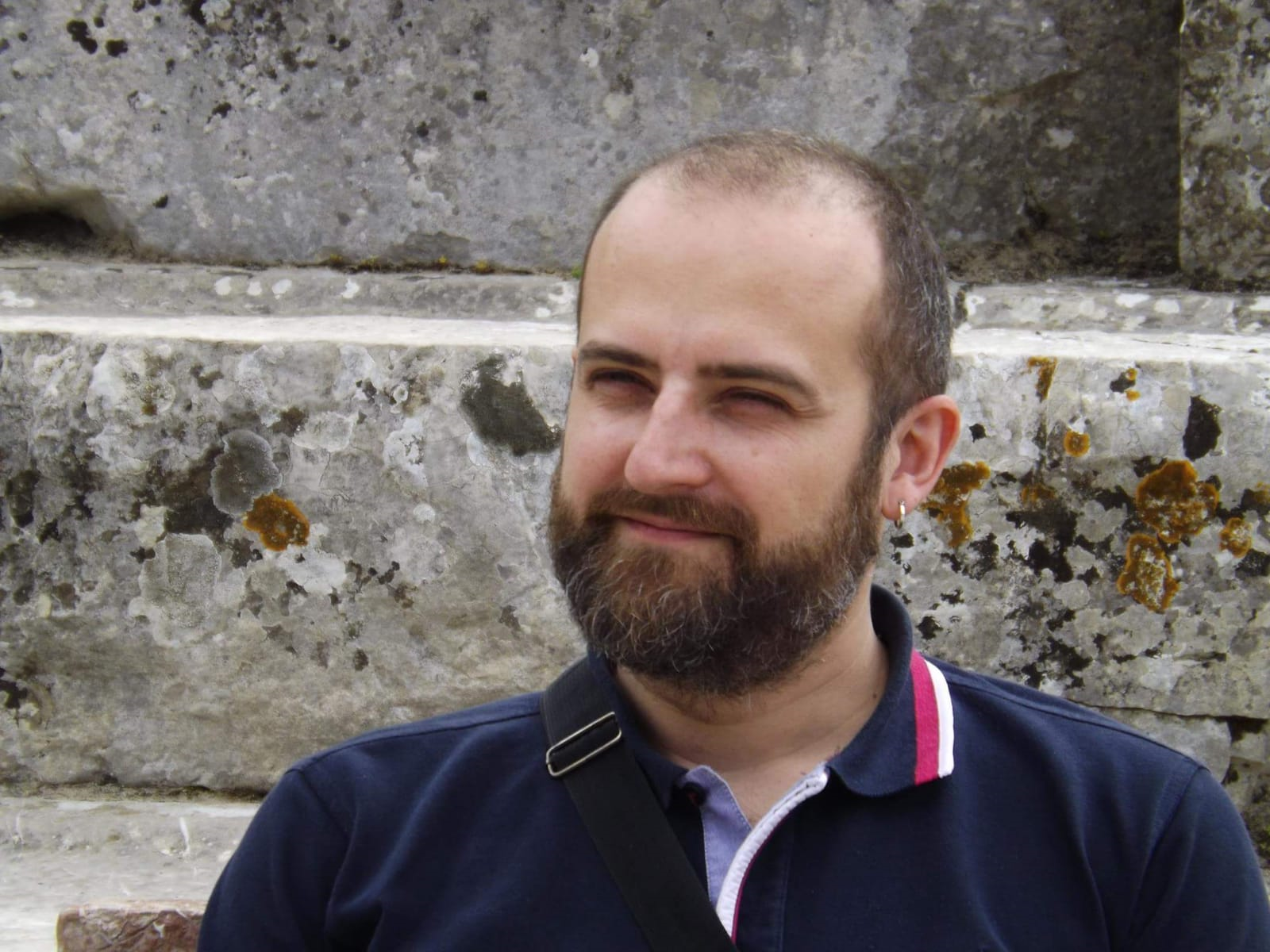
Giorgio FERRI - SEAL 2020
RITMO
The place-making function of ritual movement in Roman religion
Ritual movement, that is movement of individuals or groups on a more or less fixed route for religious causes or purposes (e.g. processions), always played a significant role in the religious life of Romans. Nevertheless, so far not enough attention has been paid to its fundamental place-making role: therefore, RITMO aims to investigate the impact and consequences of the continued performance of ritual movement on the cultural, social and physical creation of religious places, thus of collective identity and memory, in ancient Rome (8th cent. BC – 5th cent. AD). RITMO will explore two important yet less considered case studies of key ritual movements in Roman religion, the Salian rituals and the transvectio equitum, in order to better understand how such rituals shaped (and were shaped by) emotions, identity and memory processes – during and after the ritual performance – by finally becoming embedded in Rome’s sacred landscape. The project will compare these case studies with better studied examples of Roman ritual movements (e.g. the Matralia and Lupercalia) through an updated historical interpretation, an interdisciplinary and holistic approach that pays attention to long-term processes and to the agency of individuals (both men and women), and by taking into account the recent approach called ‘spatial turn’. Comparison, spatiality and an interdisciplinary approach will significantly enhance the understanding of such an essential kind of ritual performance in ancient Rome.

Christophe Levaux - SEAL 2021
ROMAVANTGARDE
The musical avant-garde in Rome in the 1960s: actors and networks in music history
ROMAVANTGARDE aims to reveal a particular phenomenon in the history of music: the effervescence of avant-garde networks in Rome during the 1960s. This phenomenon saw the first steps of influential figures to come: Frederic Rzewski, Alvin Curran, and Ennio Morricone. But it is also of particular interest as it involved a large number of artists from varied national and cultural horizons, connected diverse institutions (schools, bars, religious establishments), and saw the encounter of various genres (art music, jazz, and popular music) to create original repertoires. As a consequence, this is an ideal case to show how art music creation—despite the enduring paradigm of the individual genius—is a collective phenomenon involving human, but also nonhuman actors (institutions, artifacts, ideas). To do so, ROMAVANTGARDE will draw specifically on Actor-Network Theory (ANT), but also on Social Network Analysis (SNA). Through this case study, ROMAVANTGARDE aims to advance knowledge on the history of twentieth-century music and to reveal Rome as a cosmopolitan city actively participating in the construction of the European musical landscape. At the same time, It aims to further research on creativity and to encourage the recent exchanges between network theories and music studies.

Nicolò Palazzetti - SEAL 2021
OPERAFANS
Opera, Cyberfandom and Digital Communities in the Web Age
Today, interactions between audiences and theatres occur to a significant extent via online platforms, digital media and apps. This project is a pioneering study of the impact of these transformative technologies on opera fandom. Although recent research has begun to address the digital dissemination of opera, the phenomenon of online fandom remains under-researched. Situated at the intersection of musicology, sociology and media studies, the project will ask how opera fans perform their passion digitally. This will entail the investigation of their interactions on the web, but the project will also consider how cyberfandom intersects with traditional fan behaviour. The project is a timely reconsideration of the legacy of past audience practices and an examination of possible futures, not least at a moment when a global pandemic is challenging our conceptions of live performance. First, the project re-examines key features that have characterised the history of opera consumption: the star system, the rise of audiovisual technologies, and the spatial history of the ‘peanut gallery’ (i.e., the top gallery in a theatre where the cheaper seats and the most vocal opera lovers are traditionally located). Second, the project envisions future relations between theatres and audiences in a mediatised society in which the divide between stage and screen is constantly re-negotiated. Based on ethnographic research both offline and online carried out in complementary settings (Italy, France, Germany) and contexts (opera houses, online-only performances), the project aims to forge connections between institutions, audiences and researchers. It will engage with theatres and fans, giving special consideration to new initiatives intended to reimagine fan communities in the context of Covid-19.

Francesco Armando Di Bello – SEAL 2021
HY2C
Measurement of the Higgs Yukawa coupling to charm quark using the ATLAS detector at the LHC
The main focus of my research is to improve our understanding of elementary particle interactions. I am particularly interested in a very peculiar process: the interaction between the Higgs boson and other elementary particles called b- and c-quarks. Accurate measurement of this coupling is a milestone for modern particle physics.
To carry out these studies large experimental facilities are built aimed at colliding particle beams of high energy. At the Large Hadron Collider, the most powerful accelerator machine ever built, high energetic protons collide against one another to recreate the physics environment present in the universe right after the so-called Bing-Bang. The outcome of this collision is then detected by large multi-purpose experiments. I conduct my work within the ATLAS collaboration, one of the multi-purpose experiments at the LHC.
In particular, I develop advanced algorithms aimed at improving the challenging task of identifying b- and c-quarks. With these new tools, I am able to study in detail the Yukawa coupling to heavy flavors and try to achieve the best possible measurement of these interactions using the data collected by the ATLAS experiment. A detailed test of these interactions might lead to new, undiscovered paths towards a deeper understanding of the fundamental forces of nature.
Ufficio Progettazione e gestione ricerca internazionale
Settore Grant Office programmi individuali internazionali
Capo Settore
Giuditta Carabella
+39 06 4991 0416
Staff
Belinda Caparro
+39 06 4969 0428
Rosa Di Stefano
+39 06 4991 0719
Elisa Gigliarelli
+39 06 4991 0359
Palazzina Tumminelli (CU007)
II Piano, Stanza 211